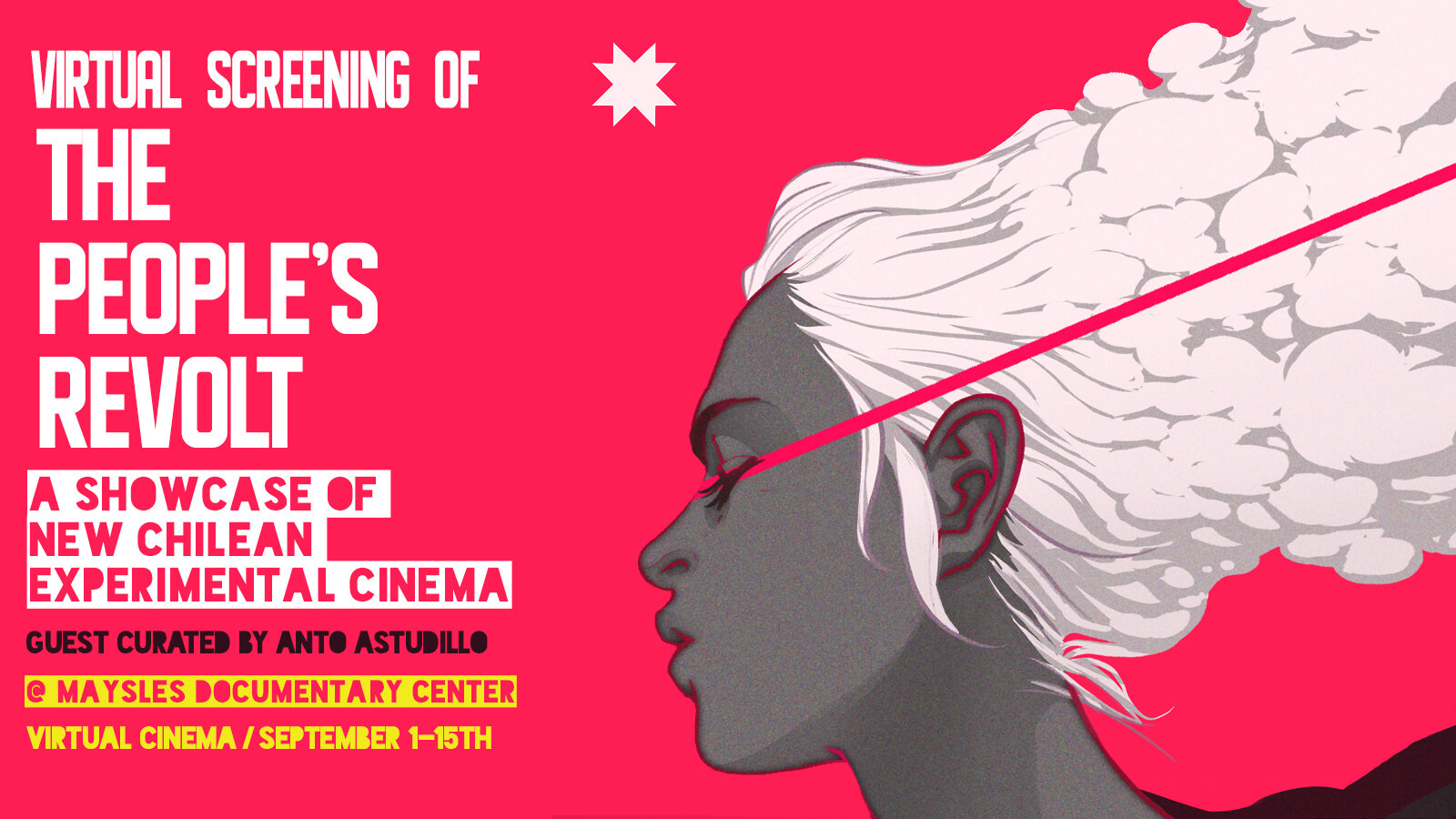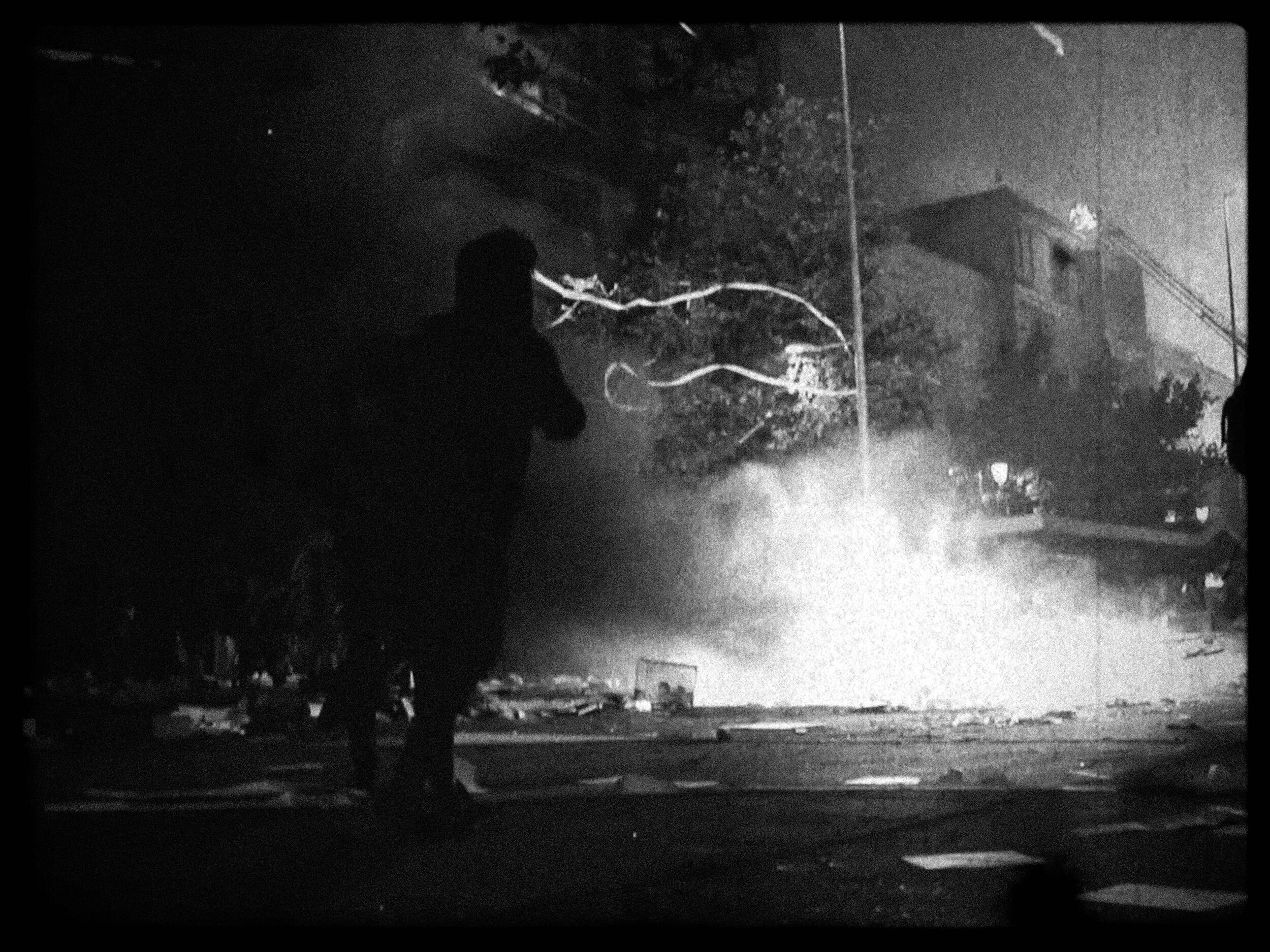In October 2019 a new popular movement was born in the streets of Santiago, Chile. Triggered by a fare increase of 30 pesos (around four cents), the movement soon came to embody 30 years of social discontent with a neoliberal model and a constitution imposed in 1980 under Pinochet’s dictatorship. As this new movement continues to grow in different cities of Chile, it is making its way to different social media platforms that have quickly formed a communal network. With a more direct way to share first-hand information coming from every neighborhood, people no longer need to rely on the national press, which is often controlled by wealthy families or the government.
The movement has also been marked by a resurgence of street photography. A profusion of images captured with portable cameras and phones are now part of a collective virtual encyclopedia. History in Chile has never had this much media coverage from so many angles. The paucity of images captured during the 1973 coup forced filmmakers at the time to use poetry in order to portray the missing picture. The long history of poetic documentaries in Chile, led by renowned directors like Patricio Guzmán, Pedro Chaskel (co-founder of the Experimental Cinema Center at the Universidad de Chile in 1957), and Ignacio Agüero, continues to this day with the duo Perut+Oznovikoff and José Luis Torres Leiva, among others. Their films explore different styles that break the conventions of documentary filmmaking, creating hybrid forms that share similarities with the American avant-garde cinema tradition.
Total running time: 97 min.
Curated by Anto Astudillo.
Anto is an experimental filmmaker, writer and performance artist from Santiago, Chile, living and working in Brooklyn, NY. They graduated from Emerson College’s Film and Media Art (MFA) program in 2017, and since then has taught 16mm film production at college level. Anto is one of the founding members of the AgX Film Collective, and currently works as an independent film programmer promoting alternative practices in filmmaking, QTPOC voices and activist artwork.
THE SERIES “LA REVOLUCIÓN DEL PUEBLO”: MUESTRA DE NUEVO CINE EXPERIMENTAL CHILENX WILL BE STREAMING ON THE VIRTUAL CINEMA SEPT. 1-15! TICKETS ARE AVAILABLE ON A SLIDING SCALE (SUGGESTED DONATION $12).
FILMMAKER DISCUSSIONS WITH CURATOR ANTO ASTUDILLO WILL BE RECORDED AND ON VIEW FOR THE DURATION THE SERIES.
In conversation with Matias Carvajal
In conversation with Franci Duran
In conversation with Maxicat & Flavi Furtado
In conversation with Daniela Sabrovsky
In conversation with Colectivo Somoslacélula
In conversation with Catrileo & Carrion Community
Cuentos de Mi Niñez
Franci Duran, 1991, 8:39 min.
16mm transferred to digital, color, sound
A documentary in which the filmmaker recalls childhood memories, accompanied by imagery from present-day Kingston and Toronto. The memories are sinister and morbid, of nightmares and suicide and dentists; the footage we see of snowy streets and a child playing and the seaside become foreboding. We learn how Francisca Duran escaped from Chile as a six-year old at the time of the bloody 1973 coup and how the death of democracy led to the death of innocence and truth.
What Comes Between
Cecilia Araneda, 2009, 5:38 min.
16mm transferred to digital, color, sound
What Comes Between is an examination of personal memory and loss rooted in the filmmaker’s birthplace – Chile – and her departure from that country long ago. The work is a collage film created with found footage from personal and historic sources, and original hand printed and tinted footage.
EDF
Nicolás Rupcich, 2013, 5:25 min. Video HD, color, sound
In “Error de Formato” the Chilean Patagonian landscapes from the “Torres del Paine National Park” are the main protagonists. As the video develops the images are slowly been deleted. The intervention consists in a “monumental black block" that literally blocks the landscape images. What we finally see is similar to the logic of the “fade to black” transition, the difference here is that not only the two-dimensional image fades to black, but also the topography is gradually covered.
Altiplano
Malena Szlam, 2018, 15:30 min.
Chile/Argentina/Canada, 35mm, color, sound
For centuries, Atacameño, Aymara, and Calchaquí-Diaguita First peoples have inhabited this territory. The region was divided between Chile, Argentina, Bolivia, and Peru after a series of boundary disputes during the nineteenth century over the large reserves of saltpeter and nitrates, which were used as fertilizers and explosives. Today the environmental struggle in the region continues, as the complex biological ecosystem is exploited for its natural resources, with only mild and ambiguous government protections. As a new form of economic colonialism, the modern mining industry has been degrading the soil and increasing pollution, resulting in the loss of flora and fauna, as well as habitat fragmentation. My intention with this film is to touch upon these histories, but using an approach different from cinematic realism. I shift the usual focus on description and verisimilitude towards a sensorial cinema that does not simply represent reality. I am interested in how the materiality of the film medium can create visual and sonic forms that open our perception, thus bringing together the “real” and oneiric worlds, while igniting a sense of awe and wonder. Attending to the sensory geography of the earth and the sky, the film layers organic images in different, overlapping temporal realms that question and open new ways of imagining our connection to the natural world at a moment when our relationship to nature is increasingly strained.
Is Not the Way
Nicolás Rupcich, 2019, 0:50 min. Digital, b&w, sound
Shocking images carry a shocking message. "It’s not the way" is a sentence used at the beginning of Chile’s social movement. Right-wing politicians referring to protesters as uneducated people who didn’t know how to behave used this sentence. The sentence is used over the images of the government palace being bombarded by the military in 1973, an action supported by the right wing of Chile.
Golpes
Anto Astudillo, 2019, 7:18 min.
16mm transferred to digital, b&w, sound
Golpes is a film that revisits the attack to the Government Palace in Santiago by the Chilean army during the coup d'etat on September 11, 1973. Through images that document the palace and its surroundings, bullet marks on near by walls, and the Atacama desert as a container of a history of disappearances and murders committed by the state, the film draws connections between the army from 1973 and the police force that guards the existing ideals inside La Moneda. The sound and the images are placed in hi-contrast as the boiling discontent outside this building becomes louder.
Aftershock 00101011
Matias Carvajal, 2019, 5:21 min.
Digital, color, sound
Aftershock 00101011 follows the space-time trajectory of a student march, addressing this mobilization as an unavoidable aftershock, a natural and material phenomenon that propagates itself in order to break a status quo but is restrained and delimited by it. In this way the social movement, as if it were a tectonic plate, yields to its own inertia, in a cycle that seems never to end in the search for a space to install its revolution or absolute earthquake.
Para que Nunca Más
Colectivo Somoslacélula, 2019, 3:21 min. Digital, color, sound
Para que nunca más is part of a trilogy project containing several images and sounds from the years of the dictatorship in Chile.
Oasis de la Región
Nicolás Rupcich, 2019, 0:52 min. Digital, color, sound
President Sebastián Piñera said that Chile was an oasis for investment in the South American region. In this piece, Nicolás Rupcich takes that idea and uses a touristic promotional video of Chile as a background to the current reality of the country. The country as a commodity imports multiple codes related to the aesthetics and aspirations of the United States. This way, some of the suburban areas of Chile become some kind of reality TV, because there is a sense of “recreating reality” based on foreign commercial conventions that have nothing to do with Chile’s cultural identity.
Estado Asesino
Kati Antivilo Escobar, 2019, 1 min. Video SD, color, sound
This piece is a selection of minidv captures from the recent revolution in the streets of Santiago de Chile against neoliberalism.
Noctvbre
Gregor Egregor, 2019, 5:55 min.
Digital, B&W, sound
Noctvbre or the dark month of October, is a poetic reading of the every day violence in the streets of Santiago during the manifestations that started in October, 2019.
Los Huesos
Colectivo Cinematográfico Pedro Chaskel (CCPH), 2019, 1:37 min.
Digital, B&W, sound
Exploración del abuso policial en Chile a través de una visualidad médica.
Using magnetic tests, it became known to the people that police forces in Chile were lying about their ammunition being rubber bullets. They were 80% metal made.
Las Manos
Colectivo Cinematográfico Pedro Chaskel (CCPH), 2019, 3:42 min. Digital, color, sound
Las Manos or The Hands is a sequence of very known political gestures trying to orchestrate the destiny of Chileans.
Colectivo Caos Germen (Open Call “No Basta con Grabar”)
A selection of short low-res videos made independent filmmakers selected by Colectivo Caos Germen. The call was an incentive to create new work out of recycled videos captured by phones or any visual material found on social media and shared via Instagram.
Bandera Falsa (Open Call “No Basta con Grabar”)
Flavichan Samurai y Makzeecat, 2019, 1 min. Digital, color, sound
Camuflaje (Open Call “No Basta con Grabar”)
Daniela Sabrovsky, 2019, 1 min.
Digital, color, sound
This video was made with found footage from Chilean soldiers during October 2019 and their use of different strategies to gain the trust of protesters. These actions are compared to those strategies used by American soldiers during war conflict in Iraq and Afghanistan.
Este es un Ciudadano Chileno (Open Call “No Basta con Grabar”)
Sebastián Arriagada, 2019, 0:57 min. Digital, color, sound
This video compares the violent reaction of the police during current social unrest in Chile versus police violence during the times of dictatorship.
Qué Dirá el Santo Padre (Open Call “No Basta con Grabar”)
Brigada de Registro, 2019, 0:52 min. Digital, B&W, sound
Folk singer Violeta Parra’s lyrics never feel outdated. In this film, her lyrics serve as a protest chant uncovering the torments of authority and the excess of violence used by the military and police in Chile.
Video Láser (Open Call “No Basta con Grabar”)
Cristóbal Acevedo, 2019, 1 min. Digital, color, sound
Video Láser it’s a collaboration between oyedaia (drummer and musical producer) and pvnto.ciego (project of audiovisual stems), about the use of laser as a resistance device during the Chilean social unrest. The video uses the cyber punk, dystopia imaginary of nighttime protest. All recordings were made at the ground zero of Santiago during the month of November 2019.
Barricada (Open Call “No Basta con Grabar”)
Margarita Carrasco, 2019, 0:59 min. Digital, B&W, sound
The barricade is a place of gathering; we feed it as the main obstacle for the police. In it’s fire we hear our raging screams and we illuminate the otherwise anonymous faces of the protest.
Ngoymalayiñ - No Olvidamos
Comunidad Catrileo+Carrion, 2019, 2:58 min.
Digital, color, sound,
No Olvidamos (we won’t forget) is a powerful piece on the numerous Mapuche (native people of the land) casualties during 30 consecutive years of democratic governments.
Corazones Unidos En La Lucha
Flavichan Samurai y Makzeecat, 2019, 2 min. Digital, color, sound
The Chilean struggle for dignity it’s supported by the small offerings of many different people who believe in a better future. Among them are Nancy, Marcela and Maite, women that get together every Friday to cook lunches for the first responders of the protest. The first responders or “first line” (avant-garde) are a group of young men and women who have become the first line of resistance against police brutality during protest, most of them come from the lowest income section of society and have a hard time getting their basic needs met.
You Can Take the Streets and Rule Them Because We Are of the Sky
Eduardo Menz, 2014, 12:47 min.
Digital, color, sound
“If I can’t dance, I do not want to be part of your revolution”, Emma Goldman’s 1931 radical statement silently hovers over these streets as nameless revolutions stir. A dancer’s interpretation and ode to the several civilian uprisings of recent years past.















